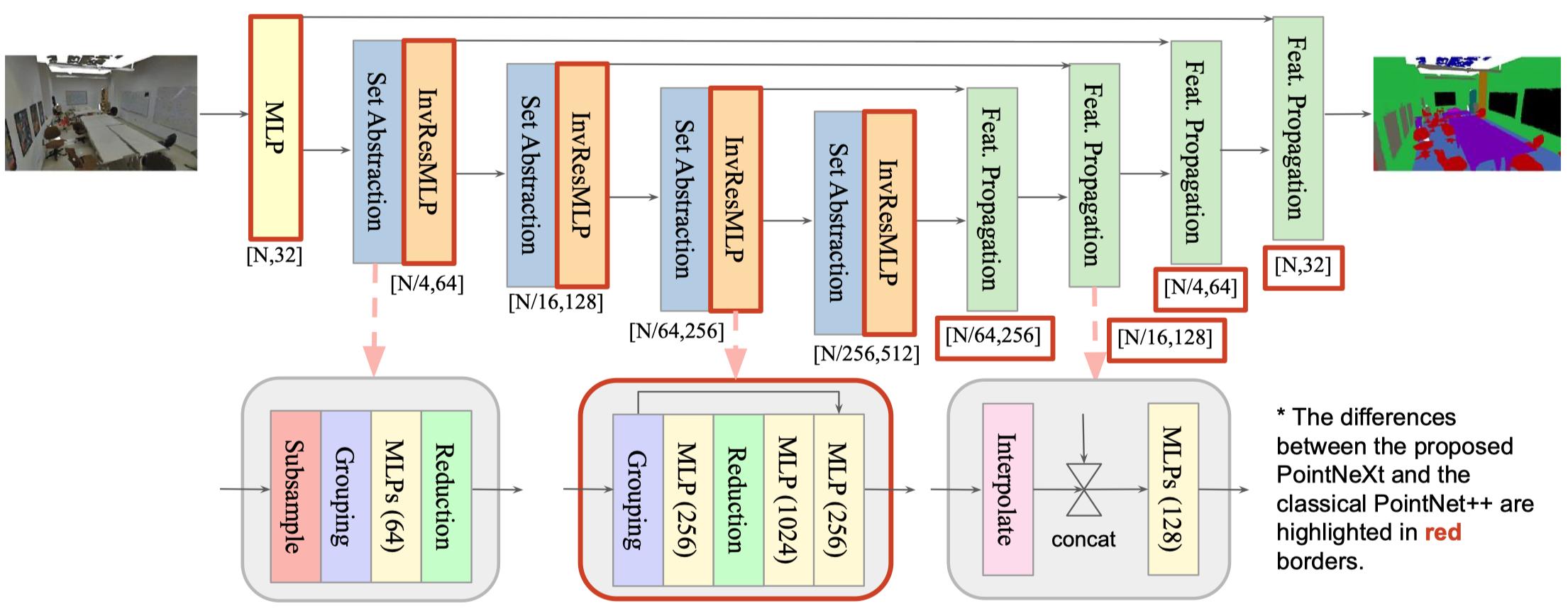Pytorch implementation of PointNext.
pip install pointnextThis will compile the CUDA operators. Please make sure that the CUDA version is compatible with your Pytorch version.
Classification
import torch
import torch.nn as nn
from pointnext import PointNext, pointnext_s
class Model(nn.Module):
def __init__(self, in_dim=6, out_dim=40, dropout=0.5):
super().__init__()
encoder = pointnext_s(in_dim=in_dim)
self.backbone = PointNext(1024, encoder=encoder)
self.norm = nn.BatchNorm1d(1024)
self.act = nn.ReLU()
self.cls_head = nn.Sequential(
nn.Linear(1024, 512),
nn.BatchNorm1d(512),
nn.ReLU(),
nn.Dropout(dropout),
nn.Linear(512, 256),
nn.BatchNorm1d(256),
nn.ReLU(),
nn.Dropout(dropout),
nn.Linear(256, out_dim),
)
def forward(self, x, xyz):
out = self.norm(self.backbone(x, xyz))
out = out.mean(dim=-1)
out = self.act(out)
out = self.cls_head(out)
return out
model = Model(in_dim=6, out_dim=40).cuda()
xyz = torch.randn(2, 3, 1024).cuda()
rgb = torch.rand(2, 3, 1024).cuda()
x = torch.cat([xyz, rgb], dim=1)
out = model(x, xyz)
print(out.shape) # (2, 40)Semantic segmentation
import torch
from pointnext import PointNext, PointNextDecoder, pointnext_s
encoder = pointnext_s(in_dim=3)
model = PointNext(40, encoder=encoder, decoder=PointNextDecoder(encoder_dims=encoder.encoder_dims)).cuda()
x = torch.randn(2, 3, 1024).cuda()
xyz = torch.randn(2, 3, 1024).cuda()
out = model(x, xyz)Part segmentation
import torch
from pointnext import PointNext, PointNextDecoder, pointnext_s
encoder = pointnext_s(in_dim=3)
model = PointNext(40, encoder=encoder, decoder=PointNextDecoder(encoder_dims=encoder.encoder_dims),
n_category=16).cuda()
x = torch.randn(2, 3, 1024).cuda()
xyz = torch.randn(2, 3, 1024).cuda()
category = torch.randint(0, 16, (2,)).cuda()
out = model(x, xyz, category)@InProceedings{qian2022pointnext,
title = {PointNeXt: Revisiting PointNet++ with Improved Training and Scaling Strategies},
author = {Qian, Guocheng and Li, Yuchen and Peng, Houwen and Mai, Jinjie and Hammoud, Hasan and Elhoseiny, Mohamed and Ghanem, Bernard},
booktitle=Advances in Neural Information Processing Systems (NeurIPS),
year = {2022},
}
